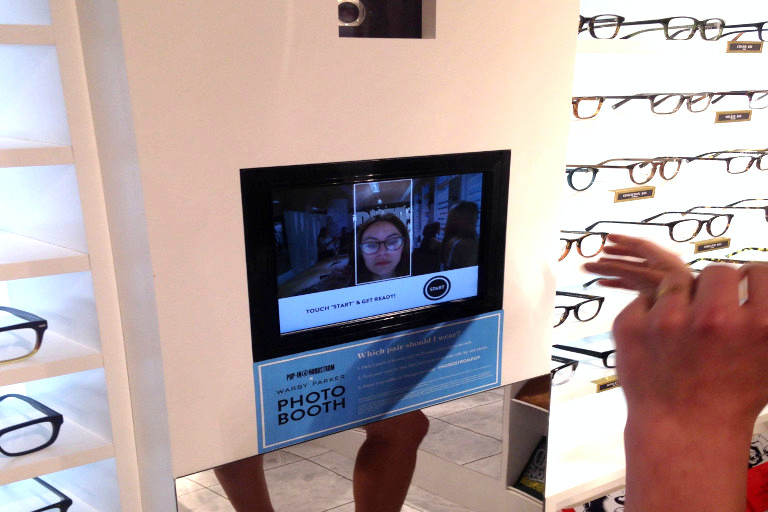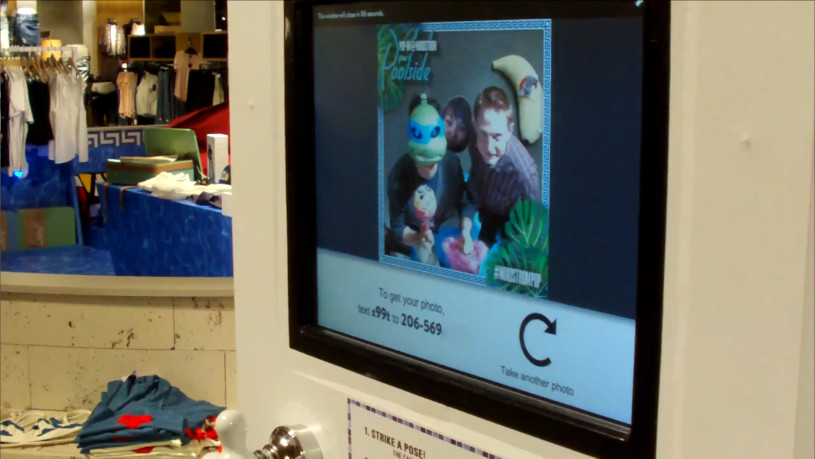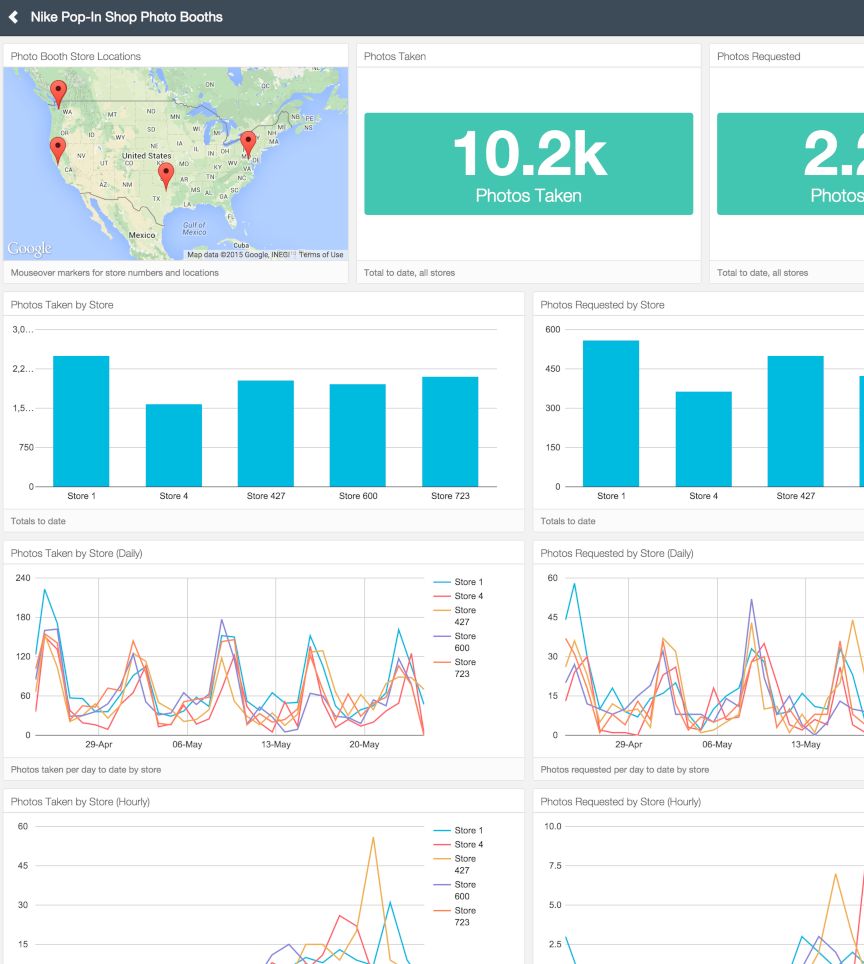



Retail Photo Booth Platform
Summary
"That in-store photo booth you built was great. Can we roll it out to dozens of stores without sending a tech team?"
I turned a one-off kiosk into a scalable platform deployed across 12 Nordstrom stores. Store staff ran campaigns using reusable kits with remote configuration, built-in analytics, and flexible rebranding, with no technical support required.
- Role — Developer, system designer, strategist, technical writer, data engineer, administrator
- Tools — JavaScript (Electron, Node.js), AWS (EC2, S3, Elastic Beanstalk, VPC), Twilio, Google Drive, Keen.io, Mac Mini, JAMF, webcam, 2020 extrusion
The system scaled from a one-off photo kiosk to a 12-store platform supporting retail campaigns, with remote configuration, analytics, and reusable deployment kits.
My focus was on building a system that could be reused, rebranded, and reconfigured, supporting not just one campaign, but a strategy for ongoing customer engagement in physical retail spaces.
Gallery
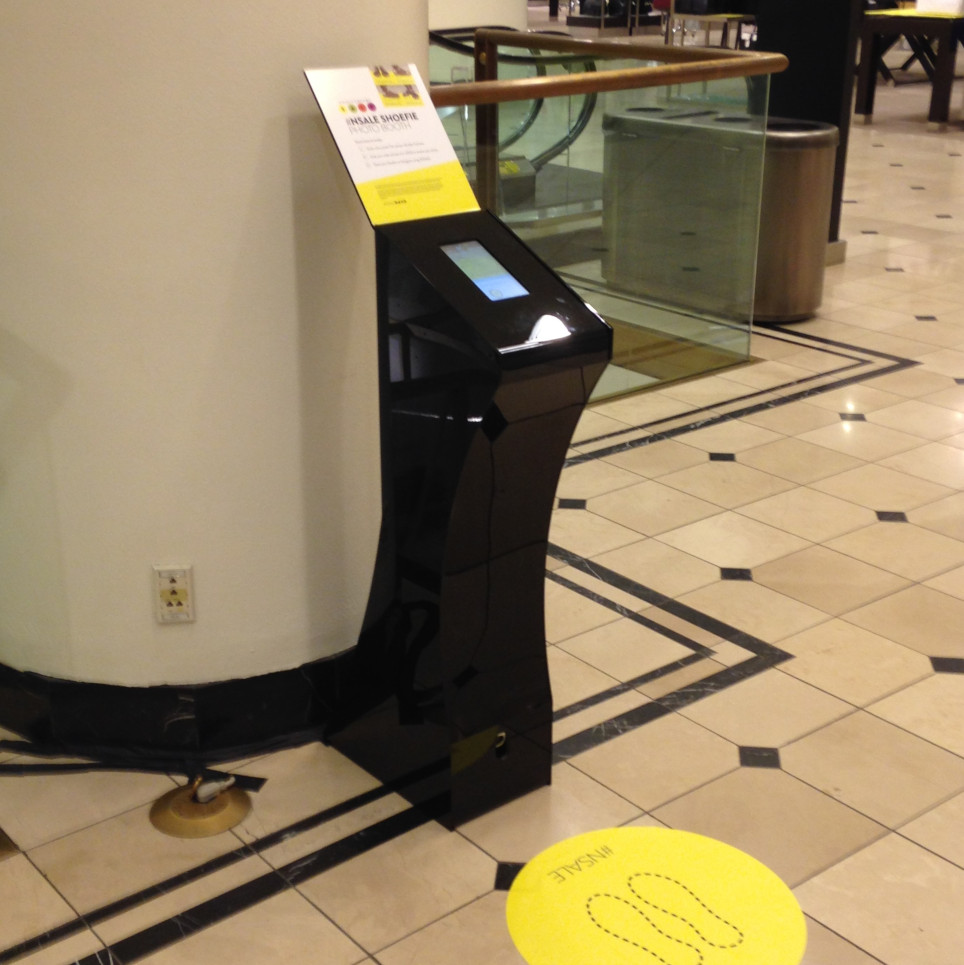
The first 'Shoefie' kiosk: floor-mounted camera, branded overlay, and SMS delivery for shareable images.
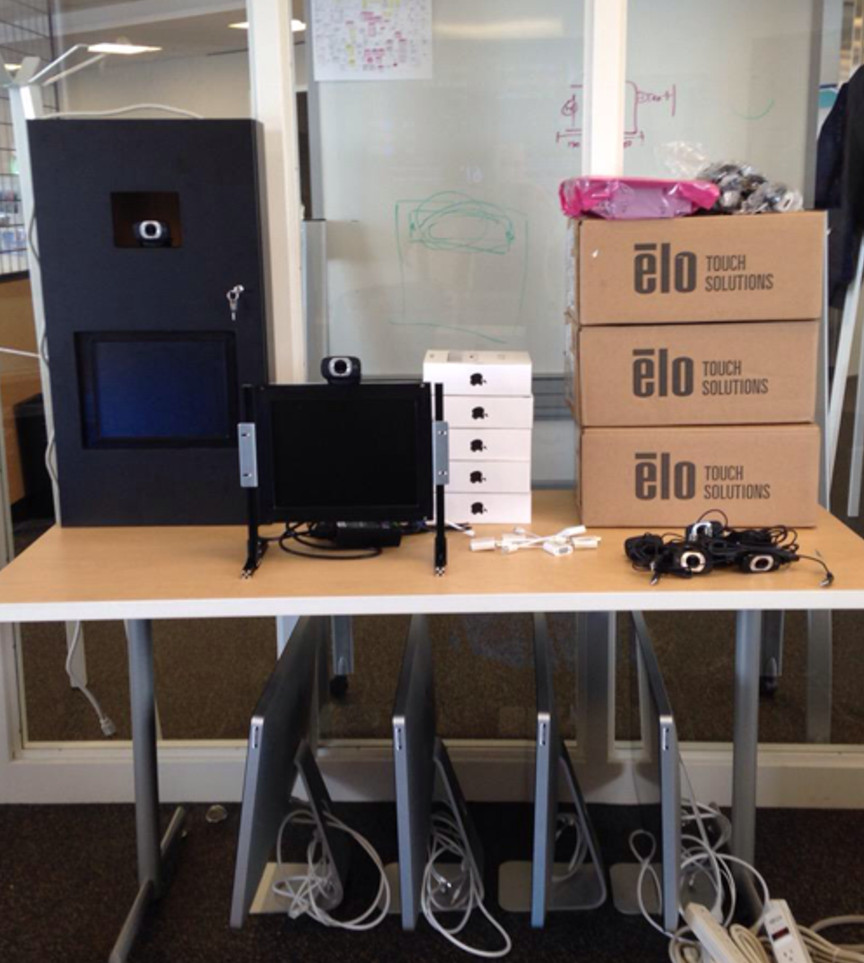
Pre-deployment kit with standardized Mac Minis, displays, webcams, and labeled components for store installation.
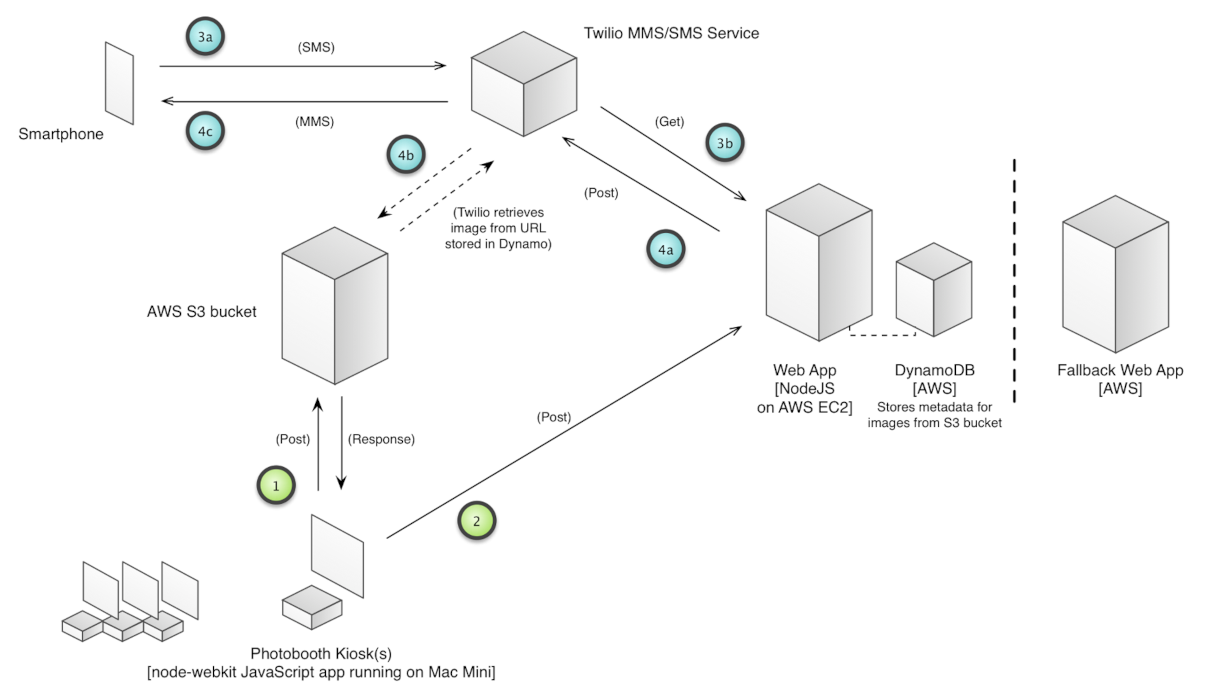
High-level architecture of the photo booth platform, showing kiosk flow, cloud services, and SMS/MMS delivery path.
Click an image for a closer look and more information.
Details
I evolved the one-time experience into a reusable, supportable platform for use in retail environments across North America. The goal was to enable marketing and retail partners to deploy, configure, and measure photo-based activations without direct engineering support, while satisfying internal privacy and IT standards.
- Designed modular hardware enclosure with display, camera, and Mac Mini, built by Visual Merchandising
- Standardized kits included labeled cables, spare parts, and printed setup guides for local teams
- Adapted camera and screen layout for face-level photos and flexible store positioning
- Built the original API in Node.js on Heroku; migrated to AWS (Elastic Beanstalk, S3, VPC) for long-term support
- Integrated Twilio for SMS delivery and secured image handoff without storing
- Submitted architecture docs for IT and Privacy review and approval
- Created initial Chrome extension interface; migrated to Electron for stability and control
- Refactored UI to support single or multi-photo modes, responsive to screen size
- Added config file options so field teams could change overlays, hashtags, and image counts without code changes
- Authored detailed install and support documentation for Visual teams in each store
- Maintained a bill of materials and standard parts list for procurement and repair
- Integrated real-time usage tracking (via Keen.io) and developed a stakeholder dashboard
- Worked with corporate IT staff to create a custom Mac OS install
- Evolved a single-use photo kiosk into a 12-store platform with support for repeatable events
- Enabled remote UX configuration and visual updates with no developer intervention
- Provided usage metrics by time and location, helping teams evaluate engagement and plan campaigns
- Reduced field support needs through standardized kits and plug-and-play deployment
- Add campaign-specific tie-ins like offer redemption or follow-up messaging
- Support scheduled content updates or seasonal visual themes
- Extend to short-form video loops and social-ready animations
- Work with engineering teams to streamline and scale codebase
- Lightweight, repeatable platforms can grow from one-off experiences if extensibility is prioritized early
- Hardware and software modularity enabled reuse across marketing activations with minimal developer involvement
- Clear documentation and remote configurability were essential for scaling with internal stakeholders
